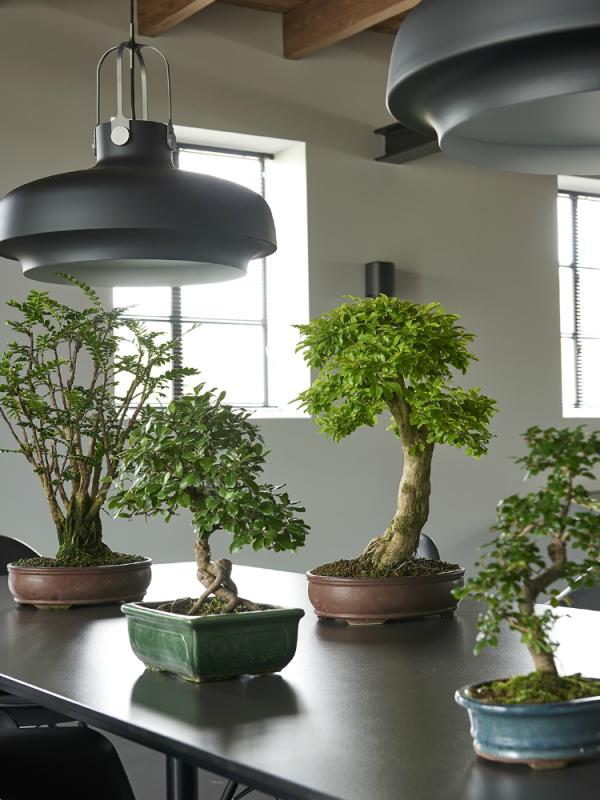Colours and shapes
A classic bonsai tree is characterised by having a woody stem. The rest of the tree can be ‘shaped’ by pruning the branches and roots, but also by encouraging the tree to grow in the direction you want, e.g. with wire. It takes some fiddling and patience, but it does result in a bonsai that perfectly matches your imagination. The houseplants that are particularly suitable for this are ficus ginseng, Japanese black and white pine and Natal plum.
Symbolism
The bonsai art form involves woody plants being transformed into miniature trees by pruning and cutting, whereby the appearance is determined by the plant’s essence. Think of it as the art of omission. The modern bonsai style arose in the 18th century, when bonsai masters decided that the spirit of the plant species concerned should shape the entire composition.
Origin
Many people think that bonsai is a classic Japanese art form. But the style originated in China, where it’s called ‘penzai’. Sound familiar? That’s right - ‘bonsai’ is the Japanese pronunciation of this word. As early as the first century A.D. the pensive Taoists use the art form for meditation. Bonsai and bonsai trees became increasingly popular outside Asia following the Second World War. Nowadays this calming art form is an essential part of our daily life.





